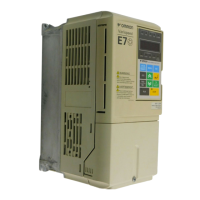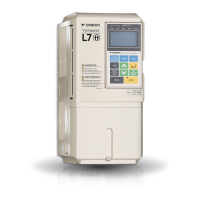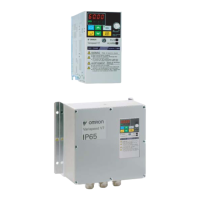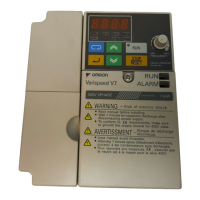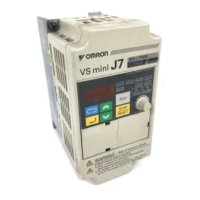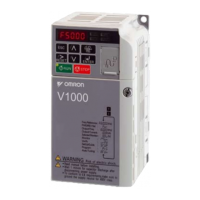6-61
6
Restarting Operation After Transient Fault (Auto Restart Function)
If an Inverter fault occurs during operation, the Inverter will perform self-diagnosis. If no fault is detected, the
Inverter will restart automatically. This is called the auto restart function.
Set the number of allowed auto restarts in parameter L5-01.
The auto restart function can be applied to the following faults.
If a fault that is not listed above occurs, the protection function will operate and the auto restart function will
not work.
Auto Restart External Outputs
To output auto restart signals externally, set H2- (multi-function digital output) to 1E (auto restart).
Related Parameters
Multi-function Digital Outputs (H2-01 to H2-03)
Application Precautions
The number of auto restarts counter is reset under the following conditions:
• After auto restart, normal operation has continued for 10 minutes.
• After the protection operation has been performed and an fault reset has been input.
• After the power supply voltage has been cycled.
• OC (Overcurrent) • RH (Braking resistor overheated)
• GF (Ground fault) • RR (Braking transistor fault)
• PUF (DC bus fuse blown) • OL1 (Motor overload)
• OV (Main circuit overvoltage) • OL2 (Inverter overload)
• UV1 (Main Circuit Undervoltage, Main Circuit MC Operation Failure)
* 1
* 1. When L2-01 is set to 1 or 2 (continue operation during momentary power loss).
• OH1 (Motor overheat)
• PF (Main circuit voltage fault) • OL3 (Overtorque 1)
• LF (Output phase failure) • OL4 (Overtorque 2)
Parameter
No.
Name
Factory
Setting
Change
during
Opera-
tion
Control Methods
V/f
V/f with
PG
Open
Loop
Vector
Closed
Loop
Vector
L5-01Number of auto restart attempts 0 No AAAA
L5-02Auto restart operation selection 0 No AAAA
Set Value Function
Control Methods
V/f
V/f
with
PG
Open
Loop
Vector
Closed
Loop
Vector
1E Automatic restart enabled Yes Yes Yes Yes
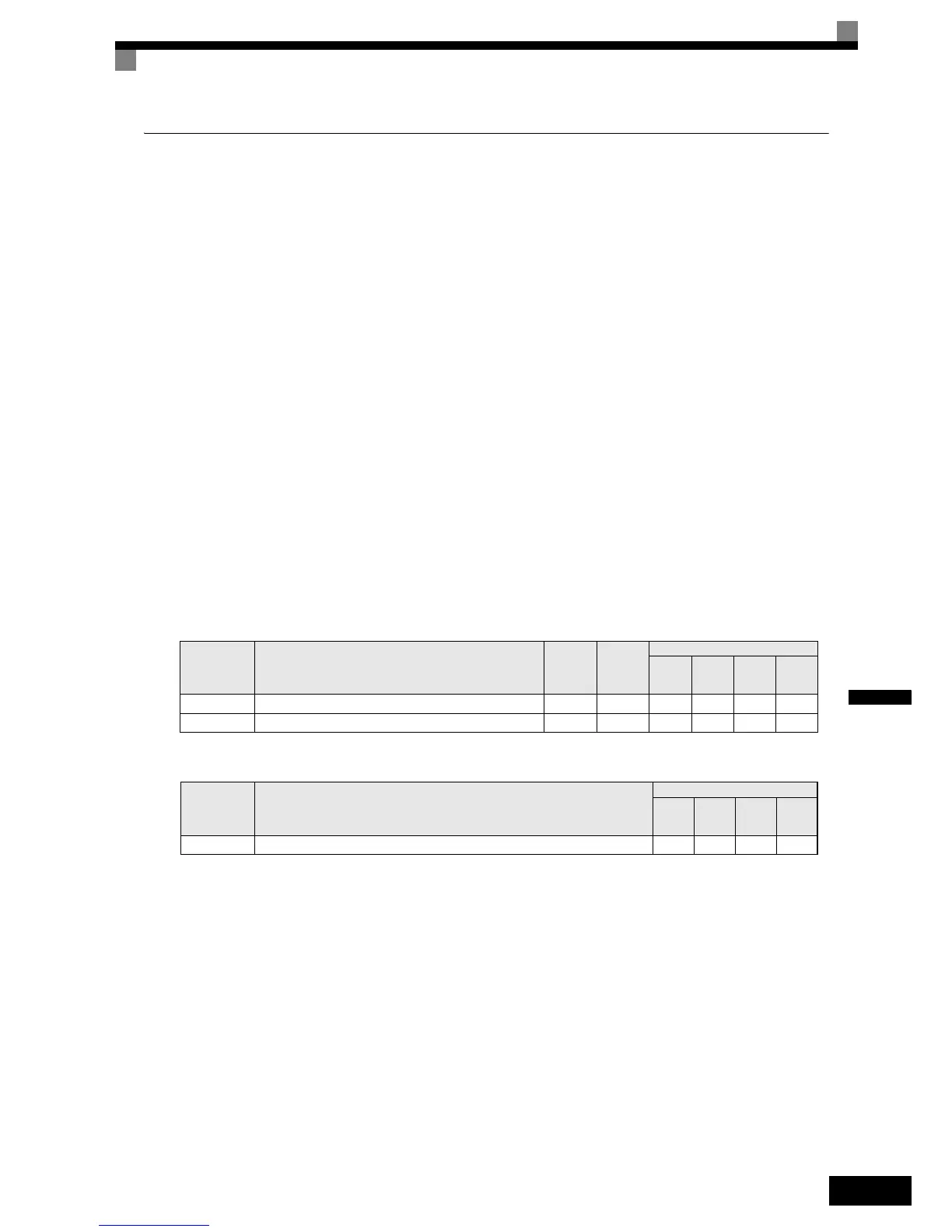